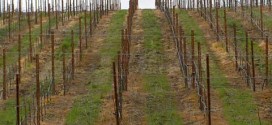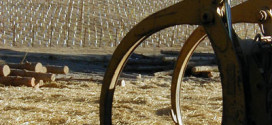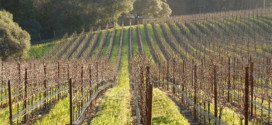August 17, 2004
Allen Robertson, Deputy Chief
California Department of Forestry and Fire Protection
P.O. Box 944246
Sacramento, CA 94244-2460
Re: Negative Declaration for Timber Harvest Plan (THP 1-04-055 SON) / Zapar-Roessler Timberland Conversion Permit (TCP 04-533)
Dear Mr. Robertson,
I am writing in regards to Timber Harvest Plan (THP 1-04-055 SON) / Zapar-Roessler Timberland Conversion Permit (TCP 04-533) at the request of, and on retainer to local citizens, who are concerned about the deterioration of the Gualala River watershed. I have read THP 1-04-055 SON and TCP 04-533 and the Negative Declaration from the California Department of Forestry (CDF). I am attaching for reference my comments recently filed on other THP/TCP projects in the Gualala River basin also given Negative Declarations by CDF. Please refer to these comments for a full description of my credentials as a fisheries scientist and watershed analyst. My prior comments include:
May 20, 2003 on the Artesia Timberland Conversion Permit 02-506 and Timber Harvest Plan (THP) 101-171 SON, which was also near Annapolis on Patchet Creek, a tributary to the Wheatfield Fork Gualala (Higgins, 2003a),
December 2003 on the Seaview Timberland Conversion Permit 524 and Timber Harvest Plan (THP) 1-01-223 SON (Higgins, 2003b) in the upper South Fork Gualala River basin, and
April 14, 2004 on THP 1-04-030SON, Hanson/Whistler Timberland Conversion Permit (TCP) #530 (Higgins, 2004).
July 17, 2004 on Timber Harvest Plan (THP 1-04-059)/ Martin Timberland Conversion Permit (TCP 04-531)
Similar to the above plans, the Zapar-Roessler project fails to recognize cumulative watershed effects (CWE) studies related to timber harvesting in northwestern California, such as those by Ligon et al. (1999), Dunne et al (2001) and Collison et al. (2003). These studies categorically state that CDFs fragmented approach to analysis is not preventing CWE and related loss of biodiversity, such as Pacific salmon species. Studies by the National Marine Fisheries Service (now NOAA Fisheries) and the California Department of Fish and Game that show a clear danger of extinction of coho salmon (Oncorhynchus kisutch), both regionally and particularly in the Gualala Basin, are once again ignored or their relevance to the plan are not discussed (NMFS, 2001; CDFG, 2003).
Again this THP/TCP does not credibly characterize existing impacts within the Little Creek Calwater Planning Watershed, let alone the Gualala River basin as a whole. The Registered Professional Forester (RPF) makes a claim that Little Creek, which these activities will affect, is not a significant stream for fish habitatbut provides no data to support this contention. He then also states that the stream gradient is suitable for salmonids and that there are no barriers. This stream would have historically supported an abundance of coho salmon and steelhead trout (Oncorhynchus mykiss). If these species are missing or at low levels, it indicates extremely diminished capacity and advanced CWE.
The THP/TCP does not address the significance of the Gualala River Total Maximum Daily Load (CSWRCB, 2001) study that described major existing sediment problems in the basin as a whole and in Buckeye Creek, to which Little Creek is a tributary. Ironically, the RPF acknowledges that pastimpacts caused sedimentation of Little Creek from which it has been slow to recover. The THP/TCP claims that there will be no sediment and flow impacts from this land use activity, which is not possible (Collison et al, 2003). Consequently, sediment issues alone should preclude use of a Negative Declaration for this plan.
The documents related to this activity once again fail to provide data or credible science-based discussions of potential changes in flow associated with conversion of intact forest land to vineyard. The accumulated sediment in the Gualala River has contributed to the loss of surface flow in widespread areas of the basin (Institute for Fisheries Resources, 2003). Therefore, there needs to be a credible discussion of CWE and flow issues as well. No flow data for Little Creek is offered and this issue also should have caused you to decline a Negative Declaration for this project.
THP 1-04-055 SON and TCP 04-533 is particularly troublesome because of its proximity to both the Martin and Hansen/Whistler projects with which it shares many characteristics. To summarize, this includes concerns about sediment discharge, changes in peak flows and base flows, increased water temperature related to sedimentation and flow depletion, and exceedence of recognized cumulative effects thresholds for disturbance needed to protect aquatic habitat diversity and Pacific salmon species (Reeves et al., 1993; Cedarholm et al., 1980). Therefore, my comments on the Martin and Hansen/Whistler projects apply generally to the present project. I conclude that THP 1-04-055 SON and TCP 04-533 is likely to have a significant and cumulative adverse impact on the environment that may cause irretrievable and irreversible harm to the prospects for Pacific salmon recovery. In keeping with provisions of the California Environmental Quality Act (CEQA), the Negative Declaration for this project is inappropriate.
Much of the basis of my previous comments and those above are contained in the KRIS Gualala database (IFR, 2003), which was funded by CDF and which I mailed you with my Martin THP/TCP comments. Please feel free to call if you have questions.
Sincerely,
Patrick Higgins
References
California Department of Fish and Game. 2002. Status Review of California Coho Salmon North of San Francisco. Report to the California Fish and Game Commission. California Department of Fish and Game, Sacramento, CA. 336pp.
California State Water Resources Control Board. 2001. Technical Support Document for the Gualala River Watershed Water Quality Attainment Action Plan for Sediment. CRWQCB, Region 1. Santa Rosa, CA. 147 pp.
Cedarholm, C.J., L.M. Reid, and E.O. Salo. 1980. Cumulative effects of logging road sediment on salmonid populations in the Clearwater River, Jefferson County, Washington. p.3874. In: Proceedings from the conference Salmon-Spawning Gravel: A Renewable Resource in the Pacific Northwest? Rep. 39. State of Washington Water Research Center, Pullman, WA.
Collison, A., W. Emmingham, F. Everest, W. Hanneberg, R. Martston, D. Tarboton, R. Twiss. 2003. Phase II Report: Independent Scientific Review Panel on Sediment Impairment and Effects on Beneficial Uses of the Elk River and Stitz, Bear, Jordan and Freshwater Creeks. Independent Science Review Panel performed analysis on retainer to the North Coast Regional water Quality Control Board, Santa Rosa, CA.
Dunne, T., J. Agee, S. Beissinger, W. Dietrich, D. Gray, M. Power, V. Resh, and K. Rodrigues. 2001. A scientific basis for the prediction of cumulative watershed effects. The University of California Committee on Cumulative Watershed Effects. University of California Wildland Resource Center Report No. 46. June 2001. 107 pp.
Institute for Fisheries Resources. 2003. KRIS Gualala Database and Map Project Two CD Set. Funded by the California Department of Forestry FRAP, Sacramento, CA. (Also on the Internet at www.krisweb.com <http://www.krisweb.com/> ).
Ligon, F., A. Rich, G. Rynearson, D. Thornburgh, and W. Trush. 1999. Report of the Scientific Review Panel on California Forest Practice Rules and Salmonid Habitat. Prepared for the Resources Agency of California and the National Marine Fisheries Service; Sacramento, CA.
National Marine Fisheries Service. 2001. Status Review Update for Coho Salmon (Oncorhynchus kisutch) from the Central California Coast and the California portion of the Southern Oregon/Northern California Coasts Evolutionarily Significant Units. Southwest Fisheries Science Center, Santa Cruz, CA. 43 p.
Reeves, G.H., F.H. Everest, and J.R. Sedell. 1993. Diversity of Juvenile Anadromous Salmonid Assemblages in Coastal Oregon Basins with Different Levels of Timber Harvest. Transactions of the American Fisheries Society. 122(3): 309-317.
 Friends of Gualala River Protecting the Gualala River watershed and the species living within it
Friends of Gualala River Protecting the Gualala River watershed and the species living within it


